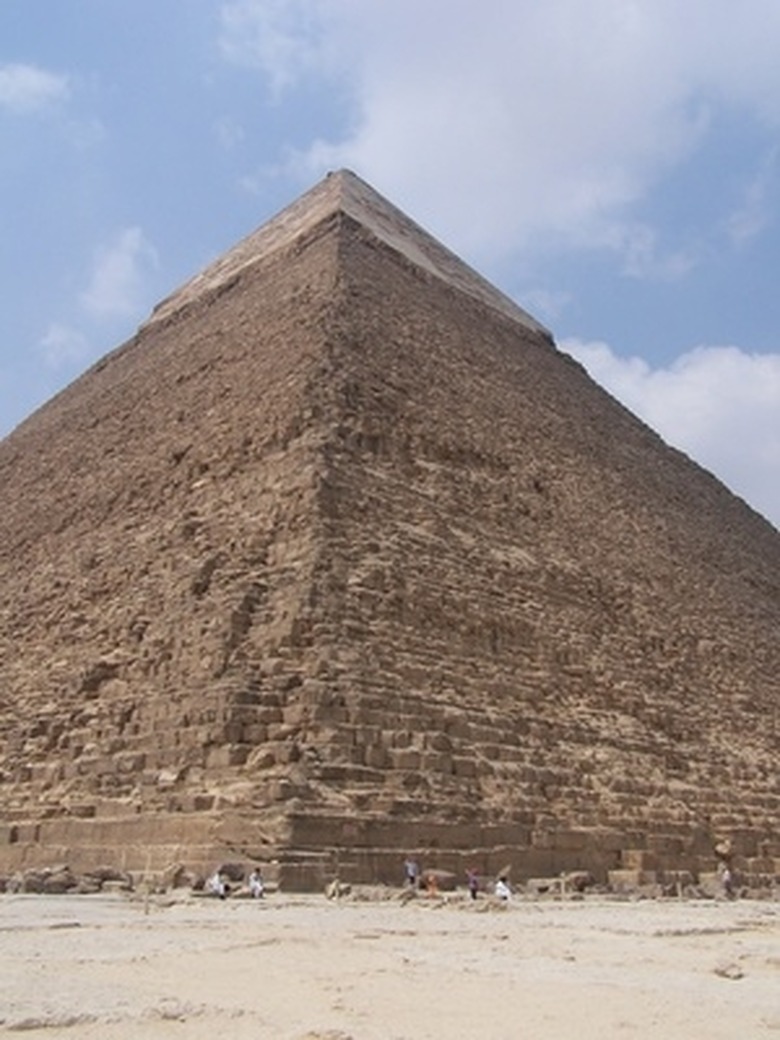How To Find The Volume Of A Triangular Pyramid
Finding the volume of a pyramid is easier than asking the mummy inside. A triangular pyramid is a pyramid with a triangular base. On top of the base are three other triangles that come together at a single vertex, or point, above. The volume of a triangular pyramid can be found by multiplying the area of its base by the pyramid's height, or perpendicular distance from the base to the vertex, and by using the apothem, which is a perpendicular line from the center of the pyramid's base to the middle of one of the base's sides
Base Area Method
Step 1
Multiply the width measurement by the length measurement of the base area. The width of the base is the measurement of one side of the base, and the length is the measure of the perpendicular line from that side to the opposite angle. For example, if the width is 8 and the length is 10, 8 by 10 results in 80.
Step 2
Divide the product from the previous step in half. 80 divided in half is 40.
Step 3
Multiply the base area of the pyramid by the pyramid's height. For this example, the height is 12, and 12 multiplied by 40 equals 480.
Step 4
Divide the product of the previous step by 3 to find the volume of the pyramid. For this example, 480 divided by 3 equals 160.
Apothem Method
Step 1
Multiply the apothem by the length of one of the base's sides. For this example, the apothem is 7 and the side length is 8. Multiplying 8 by 7 equals 56.
Step 2
Multiply the product from the previous step by the height of the pyramid. For this example, the height is 12. Multiplying 56 by 12 equals 672.
Step 3
Divide the product from the previous step by 6 to calculate the pyramid's volume. For this example, 672 divided by 6 equals 112.
Cite This Article
MLA
Gartneer, Chance E.. "How To Find The Volume Of A Triangular Pyramid" sciencing.com, https://www.sciencing.com/volume-triangular-pyramid-7838745/. 24 April 2017.
APA
Gartneer, Chance E.. (2017, April 24). How To Find The Volume Of A Triangular Pyramid. sciencing.com. Retrieved from https://www.sciencing.com/volume-triangular-pyramid-7838745/
Chicago
Gartneer, Chance E.. How To Find The Volume Of A Triangular Pyramid last modified March 24, 2022. https://www.sciencing.com/volume-triangular-pyramid-7838745/
